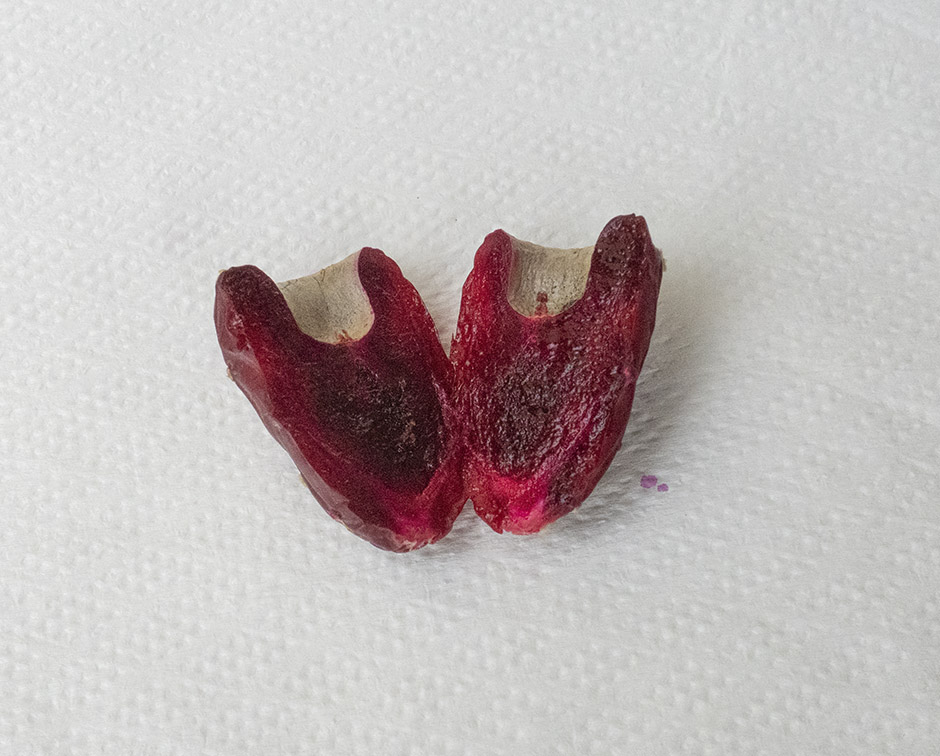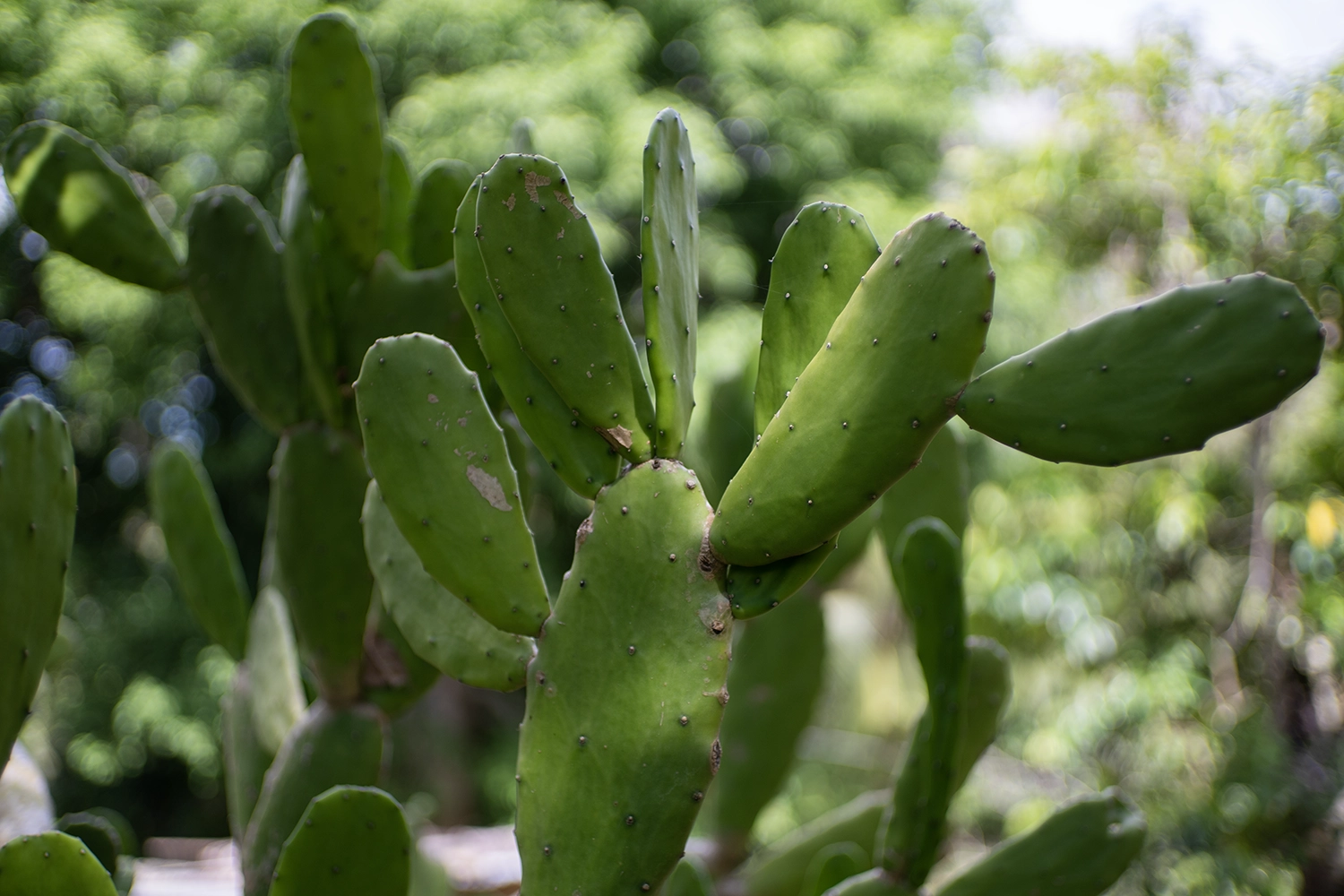The tuna plant is a member of the cactus family of plants. Not unlike other members of this group, the tuna plant can survive long intervals without water. For those who plant the tuna as a lawn plant, they need not water it at all for the rains will keep it adequately hydrated. Once a common occurrence, this practice has largely gone out of favor making the tuna plant an increasingly rare sighting on lawns. In the wild, the tuna plant can be found in well drained areas such as Hellshire in St. Catherine. The scientific name of the tuna plant is Opuntia ficus-indica but it is also known as prickly pear because of the fruits it produces. The fruit along with the younger shoots of the plant are edible but this is not a common practice in Jamaica. If you however decide to eat the fruit, there are precautions that are to be taken. While the fleshy portion of the fruit is not harmful, the skin however is very prickly. It is covered with small spines that are easily ejected and lodged into your skin when touched. These fruits should be cleared of these spines before it can be safely consumed. They can be scrubbed away using an abrasive but peeling the skin with knife might be a safer method. There is also the option of burning away the spines.
Phylum: Magnoliophyta (Flowering plant)
Family: Cactaceae
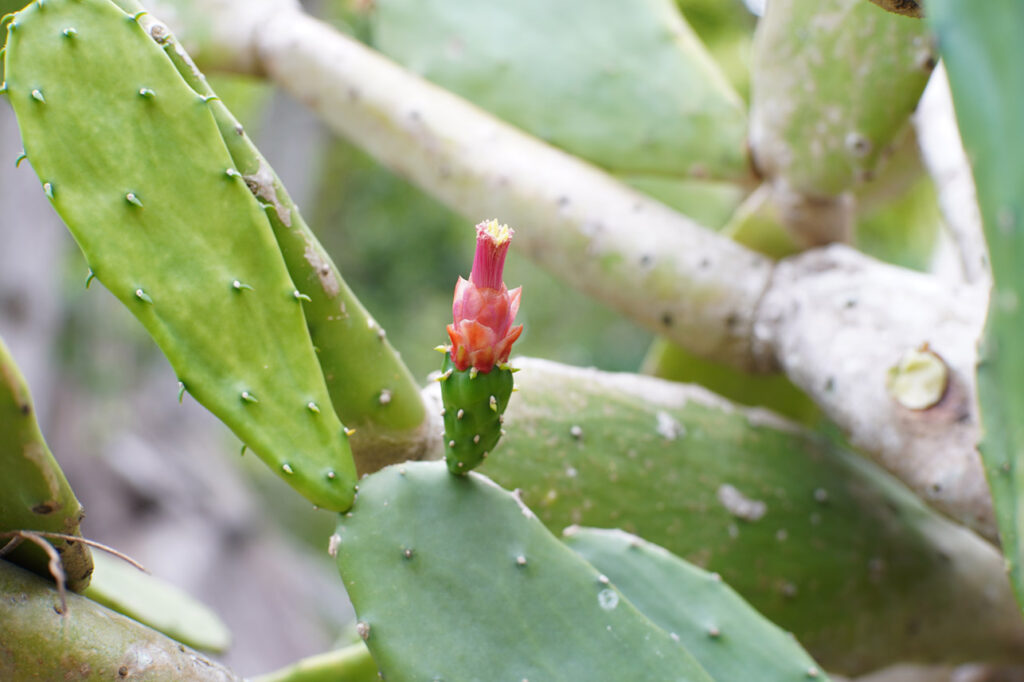
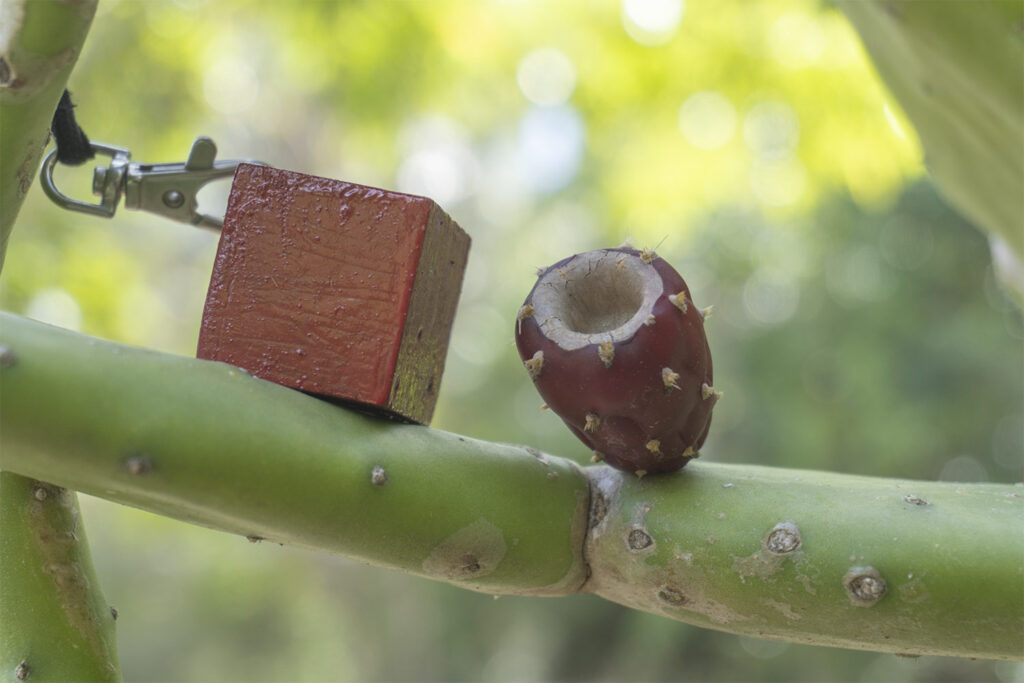
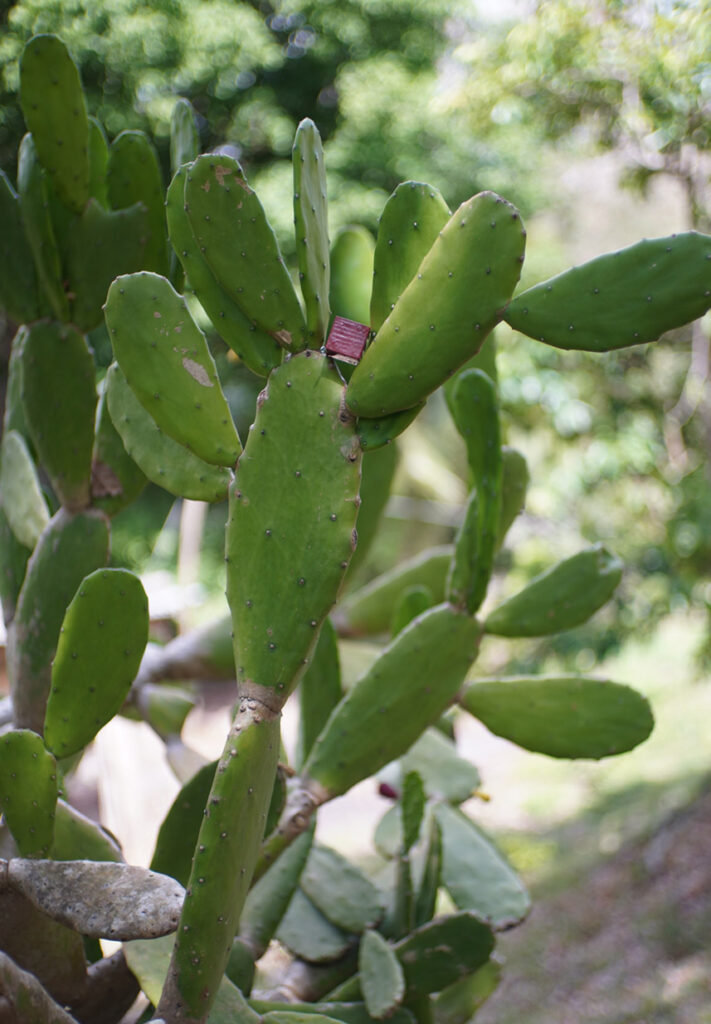
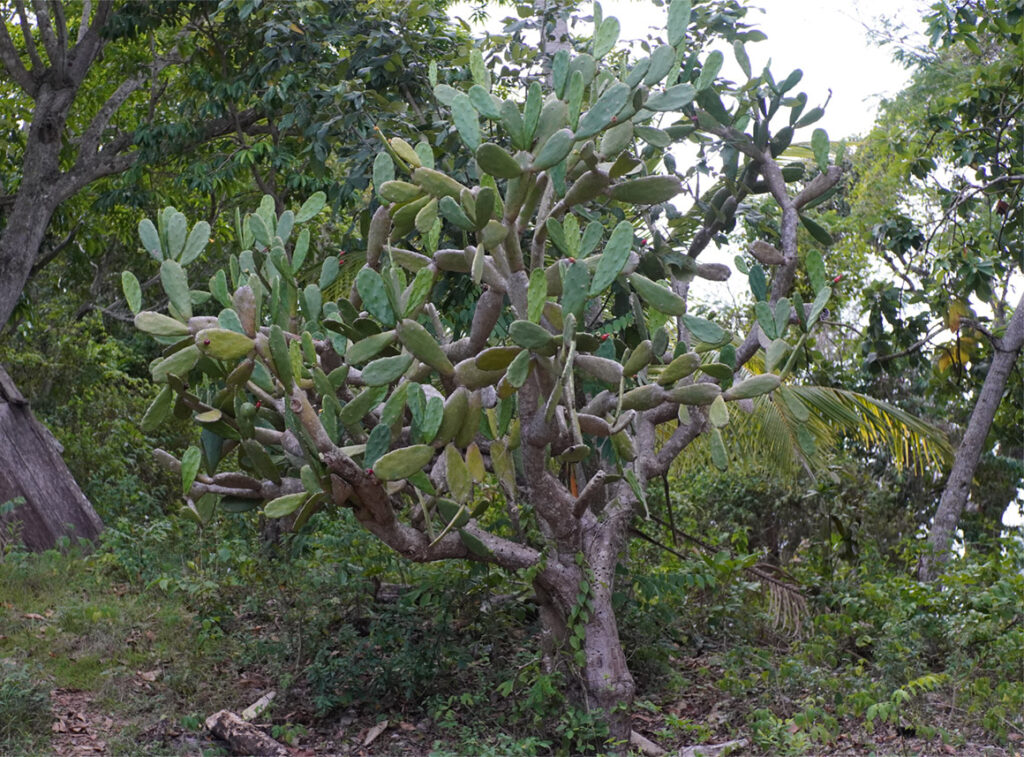
While not used for its culinary properties, the tuna plant has traditionally been used in Jamaica to wash the hair and for detoxing by soaking it in water and the extract taken orally.

